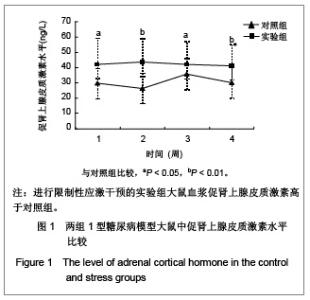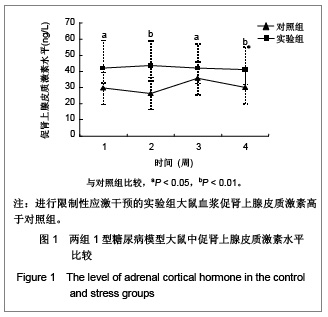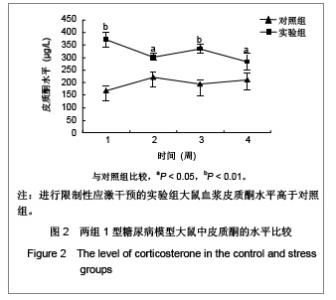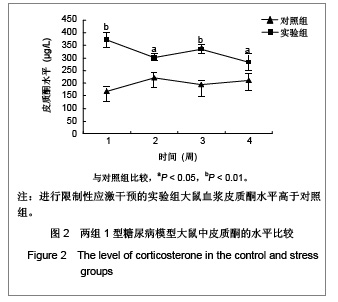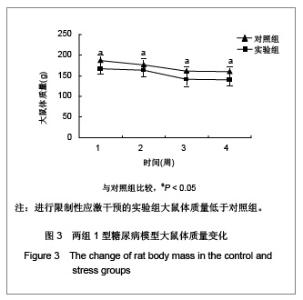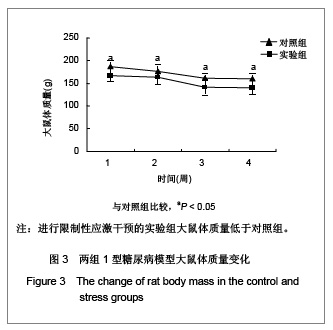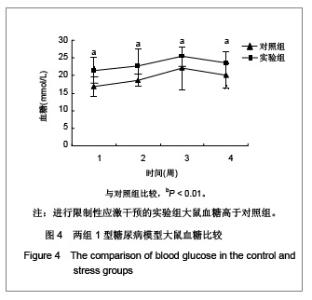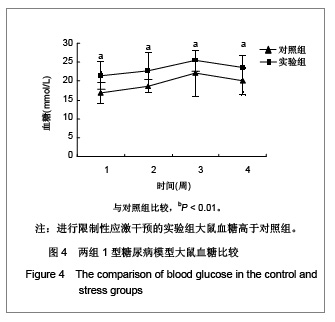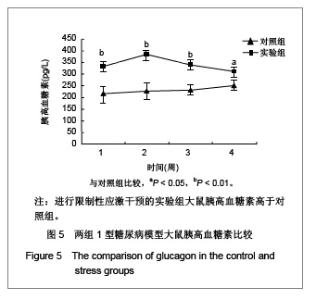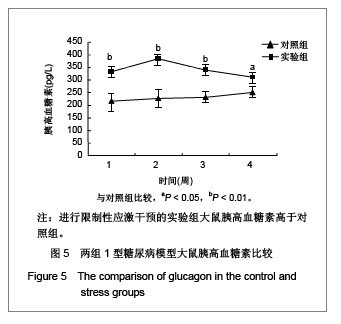| [1] Allan FN, Willis T. Diabetes three hundred years ago. Diabetes. 1953;2(1):74-77.[2] Buynitsky T, Mostofsky DI. Restraint stress in biobehavioral research: Recent developments. Neuroscience and Biobehavioral Reviews.2009;33(7):1089-1098.[3] Peng H, Hagopian W.Environmental factors in the development of type 1 diabetes. Rev Endocr Metab Disord. 2006;7(3):149-162.[4] Konturek PC,Brzozowski T,Burnat G,et al.Gastric ulcer healing and stress-lesion preventive properties of pioglitazone are attenuated in diabetic rats. J Physiol Pharmacol. 2010; 36(4):429-436.[5] Lehmann AE, Ennis K, Georgieff MK, et al. Evidence for a hyporesponsive limbic-hypothalamic-pituitary-adrenal axis following early-life repetitive hypoglycemia in adult male rats. Am J Physiol Regul Integr Comp Physiol. 2011;301(2):R484-490.[6] Sakai A.Animal models for bone and joint disease. Animal models of immobilization and unloading. Clin Calcium. 2011;21(2):181-188.[7] Jaggi AS, Bhatia N, Kumar N, et al. A review on animal models for screening potential anti-stress agents. Neurol Sci. 2011;32(6):993-1005.[8] Wei H.Sichuan Kexue Jishu Chuban She.1998:163-169. 魏泓.医学实验动物学[M].成都:四川科学技术出版社,1998: 163-169 [9] Shen YF, Xu YC. Shiyong Zhenduan Yu Zhiliao Zazhi.2005; 19(2):79-80. 沈亚非,徐焱成. 链脲佐菌素诱导实验性糖尿病大鼠模型建立的研究[J]. 实用诊断与治疗杂志,2005,19(2):79-80[10] Herlinda Aguilar-Zavala, Ma. Eugenia Garay-Sevilla, Juan Manuel Malacara, et al.Stress, inflammatory markers and factors associated in patients with type 2 diabetes mellitus. Stress and Health. 2008;24(3):49-54.[11] Bowman RE, Maclusky NJ, Diaz SE, et al. Aged rats: Sex differences and responses to chronic stress. Brain Research. 2006;1126(1): 156-166.[12] Bizon JL,Helm KA, Han JS, et al.Hypothalamic- pituitary- adrenal axis function and corticosterone receptor expression in behaviourally characterized young and aged long-evans rats. European Journal of Neuroscience.2001;14(1):1739-1751.[13] Christian LM, Deichert NT, Gouin J,et al. Psychological influences on endocrine and immune function//G. Berntson and J. Cacioppo (Eds.), Handbook of Neuroscience for the Behavioral Sciences. New Jersey:John Wiley & Sons, Inc. 2009;2:1260-1279.[14] Buynitsky T, Mostofsky DI. Restraint stress in biobehavioral research: Recent developments. Neurosci Biobehav Rev. 2009;33(7):1089-98.[15] Packard MG. Anxiety, cognition, and habit: a multiple memory systems perspective.Brain Res. 2009;1293:121-128.[16] Kumari B, Kumar A, Dhir A, et al. Protective effect of non-selective and selective COX-2 inhibitors in acute immobilization stress-induced behavioral and biochemical alterations. Pharmacological Reports.2007;59(6): 699-707. |
